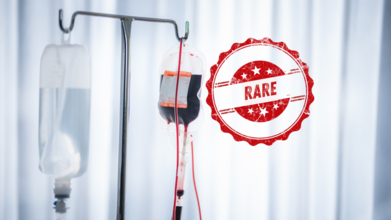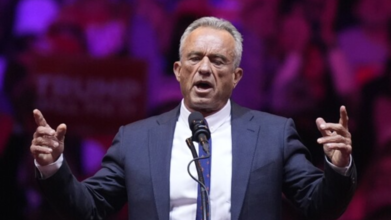- Health Conditions A-Z
- Health & Wellness
- Nutrition
- Fitness
- Health News
- Ayurveda
- Videos
- Medicine A-Z
- Parenting
- Web Stories
8 Foods That May Help Reduce Risk Of Erectile Dysfunction

Credit: Canva
Eating a well-balanced, nutrient-rich diet can prove to be a magic bullet for your health and well-being, including reproductive health. Certain foods, such as spinach, carrots, and avocados, contain key nutrients that contribute to improved blood flow and hormone balance.
The foods you consume provide essential nutrients that fuel the body, including sexual organs. Some studies suggest that maintaining a well-balanced diet may help reduce the likelihood of erectile dysfunction. Below are eight foods that may support sexual health and testosterone levels.
Fruits & Vegetables That Can Prevent Erectile Dysfunction
1. Spinach
Spinach is a rich source of folate, a nutrient known to enhance blood circulation. Folic acid plays a crucial role in male sexual function, and low levels have been linked to erectile dysfunction. A cup (240 grams) of boiled spinach provides 66% of the daily recommended intake of folate. Additionally, spinach contains magnesium, which promotes blood flow and may reduce the risk of erectile dysfunction.
2. Caffeine
Caffeine may have a role in preventing erectile dysfunction, though research findings are mixed. A 2014 study involving over 3,000 men found that those with a higher caffeine intake (85 to 300 mg per day) reported fewer instances of erectile dysfunction. However, a 2024 review of studies involving more than 51,000 men did not establish a significant link between caffeine consumption and erectile dysfunction.
3. Apples
Apples are high in flavonoids, natural plant compounds that offer various health benefits. A 2016 review identified apples as a top source of flavonoids such as anthocyanins, flavones, and flavanones. Increased consumption of these compounds was linked to a 19% lower risk of erectile dysfunction. Additionally, apple peels contain ursolic acid, which has shown potential in inhibiting prostate cancer cell growth.
4. Avocados
Avocados have long been associated with fertility and sexual health. They are rich in vitamin E and zinc, both of which contribute to sperm quality and testosterone production. A 2024 review suggests that avocados may enhance sexual duration, reduce premature ejaculation, increase attraction, and improve overall sexual satisfaction.
5. Chile Peppers
A 2015 study found that men who preferred spicier foods had higher testosterone levels in their saliva. While this does not confirm that spicy foods directly boost testosterone, the compound capsaicin found in hot peppers may have benefits. A 2013 study suggested that capsaicin stimulates pleasure centers in the brain, potentially enhancing mood and serving as an aphrodisiac.
6. Carrots
Carrots contain carotenoids, which may help improve testosterone production, sperm count, and sperm motility. Given that low testosterone levels are linked to erectile dysfunction, consuming carrots may help manage hormone levels.
7. Oats
Oats contain L-arginine, an amino acid that helps relax blood vessels, potentially improving blood flow to the penis. Some studies suggest L-arginine may aid in treating erectile dysfunction and boosting testosterone levels. Additionally, oats have been classified as an aphrodisiac that may enhance libido.
8. Tomatoes
Tomatoes are packed with antioxidants, including lycopene, which may support sexual and reproductive health. A 2024 review found that individuals with lower lycopene intake had a higher risk of erectile dysfunction. Tomatoes are also rich in vitamin C and polyphenols, which may reduce inflammation and improve blood flow. A 2017 study involving men with infertility suggested that consuming tomato juice for 12 weeks improved sperm motility.
Can Diet Alone Cure Erectile Dysfunction?
While there is limited research on whether diet alone can reverse erectile dysfunction, a 2020 review found that following a Mediterranean diet—rich in fruits, vegetables, whole grains, legumes, and healthy fats—may help prevent the condition.
Not O, Not AB— This Indian Woman Has A Rare Blood Type 'CRIB' With No Matches Worldwide

Credits: Canva
In what is being hailed as a groundbreaking moment in global transfusion medicine, a 38-year-old woman from Karnataka, India, has been identified as the first known carrier of a previously undocumented human blood group, now officially named CRIB. This unprecedented finding came to light when she was admitted to R.L. Jalappa Hospital in Kolar for heart surgery in 2023.
Though she was originally typed as O-positive, her blood didn’t behave like it. It reacted with every test sample available in the lab—something known as being panreactive. That raised immediate red flags among her physicians. No compatible donor could be found, even among 20 of her closest family members. Despite the risk, the surgical team completed her cardiac procedure without a transfusion—a decision that would later prove critical in her survival and in medical history.
What followed was a medical investigation that spanned continents. Her blood sample was sent to the International Blood Group Reference Laboratory (IBGRL) in Bristol, UK—one of the world’s leading institutions in blood group identification. There, a team of transfusion scientists spent 10 months conducting molecular and serological analyses to crack the case.
Also Read: James Van Der Beek Shares Health Update After Stage 3 Colorectal Cancer Diagnosis
Finally, they concluded that her blood carried an unknown antigen—a marker on red blood cells that typically determines compatibility for transfusions. The antigen didn’t match anything in the 43 existing blood group systems recognized by the International Society of Blood Transfusion (ISBT).
A new antigen was identified within the Cromer blood group system, which involves proteins called decay-accelerating factor (DAF) on red cells. To honor the origin of the discovery, scientists named the antigen CRIB, an acronym combining Cromer, India, and Bengaluru.
What Is the CRIB Blood Group?
The CRIB blood group represents a rare antigen profile within the Cromer system. In most people, antigens in this group are present on DAF proteins. But in the CRIB case, the woman lacked a high-prevalence antigen commonly found in the general population, causing her immune system to react to every available donor blood type—even O-positive.
This made the woman’s blood functionally unique. Anyone with this blood type would need extremely rare, CRIB-negative blood in the case of transfusion—currently, there’s no known matching donor worldwide.
This isn’t just a medical oddity—it has far-reaching consequences for how we approach blood donation, transfusion safety, and immunogenetics.
The CRIB blood group challenges conventional systems used for blood typing and compatibility. It underscores how standard blood typing is still incomplete, and how gaps in our understanding can be dangerous—especially in emergency surgeries or during pregnancy.
How Is This Blood Type Discovery Affect Pregnancy and Fetal Health?
The discovery of CRIB has serious implications for fetal medicine. Similar to how Rh incompatibility can lead to Hemolytic Disease of the Fetus and Newborn (HDFN), CRIB-positive mothers might develop antibodies that attack the fetus’s red blood cells—if the baby inherits incompatible antigens.
Detecting CRIB in expectant mothers could therefore become critical in preventing miscarriage or fetal complications.
India’s diverse gene pool has previously produced rare blood group discoveries, including INRA (Indian Rare Antigen), first identified in 2017. With CRIB now officially recognised by ISBT, it marks India’s second major contribution to global transfusion science in under a decade.
This elevates the importance of developing a national rare blood registry, and investing in genetic blood screening—not just for patients, but for potential donors.
What Is The Science Behind the Cromer Group?
The Cromer blood group system is one of the more obscure and less commonly tested classifications in blood science. It involves antigens located on the DAF (decay-accelerating factor), which protects blood cells from immune destruction. Variants in these antigens can cause unexpected immune reactions during transfusions.
CRIB appears to represent a novel Cromer antigen—meaning it doesn’t behave like any of the previously documented ones. This puts it in a category of what transfusion scientists call high-prevalence antigen absences, where even a single unit of compatible blood can be hard—or impossible—to find.
In an effort to find a compatible blood donor, doctors collected samples from 20 of her family members. None matched. This confirmed that the antigen pattern was not only rare—it was potentially unique.
The case was handled with meticulous care. According to Dr. Ankit Mathur from the Rotary Bangalore TTK Blood Centre, “Her blood was panreactive, incompatible with all test samples. Recognising this as a possible case of a rare or unknown blood type, we worked closely with international experts and managed the case without transfusion.” Now that CRIB has been added to the official ISBT database, transfusion scientists across the world are advocating for:
- Development of CRIB-specific antibody screening kits
- International rare blood registries to flag potential future donors
- Greater investment in genetic blood typing, especially in populations with diverse ancestry
- Training healthcare professionals to recognise and manage panreactive or atypical cases earlier
The discovery of CRIB is more than a scientific milestone—it’s a reminder of how individual cases can rewrite medical textbooks. One woman’s unusual blood has now become a catalyst for change in how we view transfusion safety, genetics, and global healthcare cooperation.
For now, she remains the only known person in the world with the CRIB blood group but her case has opened the door to more discoveries and potentially, more lives saved.
James Van Der Beek Shares Health Update After Stage 3 Colorectal Cancer Diagnosis

Credits: Instagram
James Van Der Beek says his life will never be the same again. Diagnosed with stage 3 colorectal cancer in August 2023, the Dawson’s Creek and Varsity Blues actor is now facing the kind of life transformation that goes far beyond Hollywood scripts.
“I’m just on the journey,” the 48-year-old told Today.com in a candid interview. “It's a process. It'll probably be a process for the rest of my life."
For Van Der Beek, living with cancer isn’t just about treatment. It’s become a full-time job, one that’s required a complete overhaul of his lifestyle. From modifying his diet to rethinking how he exercises and rests, the actor has embraced a slower, more intentional way of living.
Finding Peace in Slowing Down
“The most important thing,” Van Der Beek shared, “is to find the beauty of just taking things a little bit more slowly and prioritizing rest, and really allowing that to be the job.”
His perspective is reflective of someone who has been forced to confront mortality. In an emotional Instagram post in March, the actor said, “I had to come nose to nose with death.”
During treatment, he had to step back from his role as a father and husband. “I could no longer be a father who could pick up his kids and put them to bed... I could not be a provider because I wasn't working."
Yet in the quiet moments of stillness, he found something unexpected: spiritual clarity. “I meditated and the answer came through. I am worthy of God's love, simply because I exist. And if I'm worthy of God's love, shouldn't I also be worthy of my own?”
Encouraging Others to Get Screened
Van Der Beek, who was screened at age 46, is now encouraging others to get checked earlier. He admitted he was unaware that the recommended age for colorectal cancer screenings had been lowered to 45.
“I thought I was way ahead of the game,” he said. “I ate as well as I could. I was healthy. I was in amazing cardiovascular shape. There was no reason in my mind that I should have gotten a positive diagnosis.”
His message is clear: even those who feel and look healthy aren’t immune, and early detection can be life-saving.
Back on Set and Grateful for It
Despite everything, Van Der Beek has been finding joy and even normalcy through work. He recently filmed for the upcoming Legally Blonde prequel series Elle, calling the experience a much-needed escape.
"The greatest thing about work is cancer doesn't exist between action and cut," he said. “It was fun to drop in and just have a blast… It’s such a great cast, a great production, and everybody out there is really talented.”
A Healing Phase and a Family Anchor
In March, he gave Extra an update from his Texas ranch, where he lives with his wife Kimberly and their six children, Olivia (14), Joshua (13), Annabel (11), Emilia (9), Gwendolyn (7), and Jeremiah (3). Van Der Beek said he’s now in a “healing portal,” adding, “I feel like I can see the finish line.”
Earlier that month, he made his debut as the Griffin on The Masked Singer, a role that offered unexpected emotional catharsis. “To be able to put on the mask and connect with an audience without [my diagnosis] being a part of the equation was actually a really beautiful thing,” he said.
RFK Jr. Is Leaving Behind 'Rigorous Science', Say Ousted Vaccine Panel Members

Credits: AP
Last month, 17 top public health experts were abruptly removed from the U.S. Advisory Committee on Immunization Practices (ACIP), the group historically responsible for setting national vaccine guidelines. The move came directly from U.S. Health Secretary Robert F. Kennedy Jr., who dismissed the entire panel, accusing them of being too closely tied to vaccine manufacturers and too quick to approve vaccines without scrutiny.
In their place, Kennedy appointed several individuals known for their skepticism toward vaccines, a controversial decision that has sparked concern among the medical community.
READ MORE ON: RFK Jr. Removes Entire CDC Vaccine Advisory Committee
Kennedy Names New Vaccine Advisers Among Whom Are Anti-Vaxxers And Those Who Spread Misinformation
“A Travesty” of a First Meeting
In a strongly worded commentary published in the New England Journal of Medicine this week, the ousted experts criticized what they say is a dangerous shift in how vaccine policy is being handled. According to the former committee members, the new ACIP lacks rigorous scientific review and open discussion.
They pointed to the new committee’s first meeting in June as a troubling example.
The session included a presentation from a known anti-vaccine advocate warning against thimerosal, a preservative used in some flu vaccines, despite longstanding studies showing no link between thimerosal and neurodevelopmental disorders. Strikingly, the new panel did not hear from Centers for Disease Control and Prevention (CDC) scientists who could have presented data debunking the concerns.
Despite acknowledging the lack of evidence against thimerosal, the committee still voted to recommend removing it from vaccines.
ALSO READ: RFK Jr. Orders Thimerosal Removed From All US Flu Shots
“That meeting was a travesty, honestly,” said Dr. Yvonne Maldonado, a pediatric infectious disease expert from Stanford University and a former ACIP member, as reported by AP.
A Pattern of Destabilization
This isn’t the first time Kennedy’s decisions have raised eyebrows.
In May, he made headlines for halting the federal recommendation of COVID-19 vaccines for healthy children and pregnant women. The fired experts addressed this in an earlier essay published in the Journal of the American Medical Association, calling Kennedy’s choices “destabilizing.”
Now, their latest commentary goes further, warning that the current path could lead to long-term damage to public health. They argue that Kennedy and his newly selected panel are dismantling a once-trusted system that upheld science-based, unbiased vaccine guidance for decades.
Proposing a Way Forward
Recognizing the challenge of restoring the former ACIP structure, the ousted experts proposed new ideas for preserving trustworthy vaccine policy. They suggest forming an alternative committee, potentially independent from the federal government, to provide reliable recommendations.
“No viable pathway exists to fully replace the prior trusted and unbiased ACIP structure and process,” they wrote. “Instead, the alternatives must focus on limiting the damage to vaccination policy in the United States.”
Other suggestions included encouraging leading professional health organizations to collaborate on unified recommendations, or establishing an external group to audit ACIP’s guidance. However, the experts admitted that such efforts face major hurdles, especially regarding access to government-held data.
YOU MAY LIKE TO READ: RFK Hires Autism Skeptic To Look Into CDC Autism Data
Insurance Coverage and Access at Risk
One major concern with shifting vaccine policy outside federal guidance is how insurance providers will respond. Would insurers cover vaccines recommended by independent groups but not by the ACIP?Noel Brewer, a former committee member from the University of North Carolina, warned that insurers might selectively cover vaccines based on short-term cost savings. For example, the flu shot, which helps avoid immediate healthcare expenses, might be approved, while longer-term preventive vaccines, like the HPV shot, could be left out.
“That’s the danger,” Brewer said. “Vaccines that prevent future cancers might not make the cut.”
A Growing Controversy
Kennedy’s actions have not gone unnoticed in Congress. During a recent House hearing, Democratic lawmakers grilled him about his rapid and sweeping changes to national vaccine policy. So far, the U.S. Department of Health and Human Services has not responded to media inquiries regarding the criticism or the experts’ proposed solutions.
© 2024 Bennett, Coleman & Company Limited

